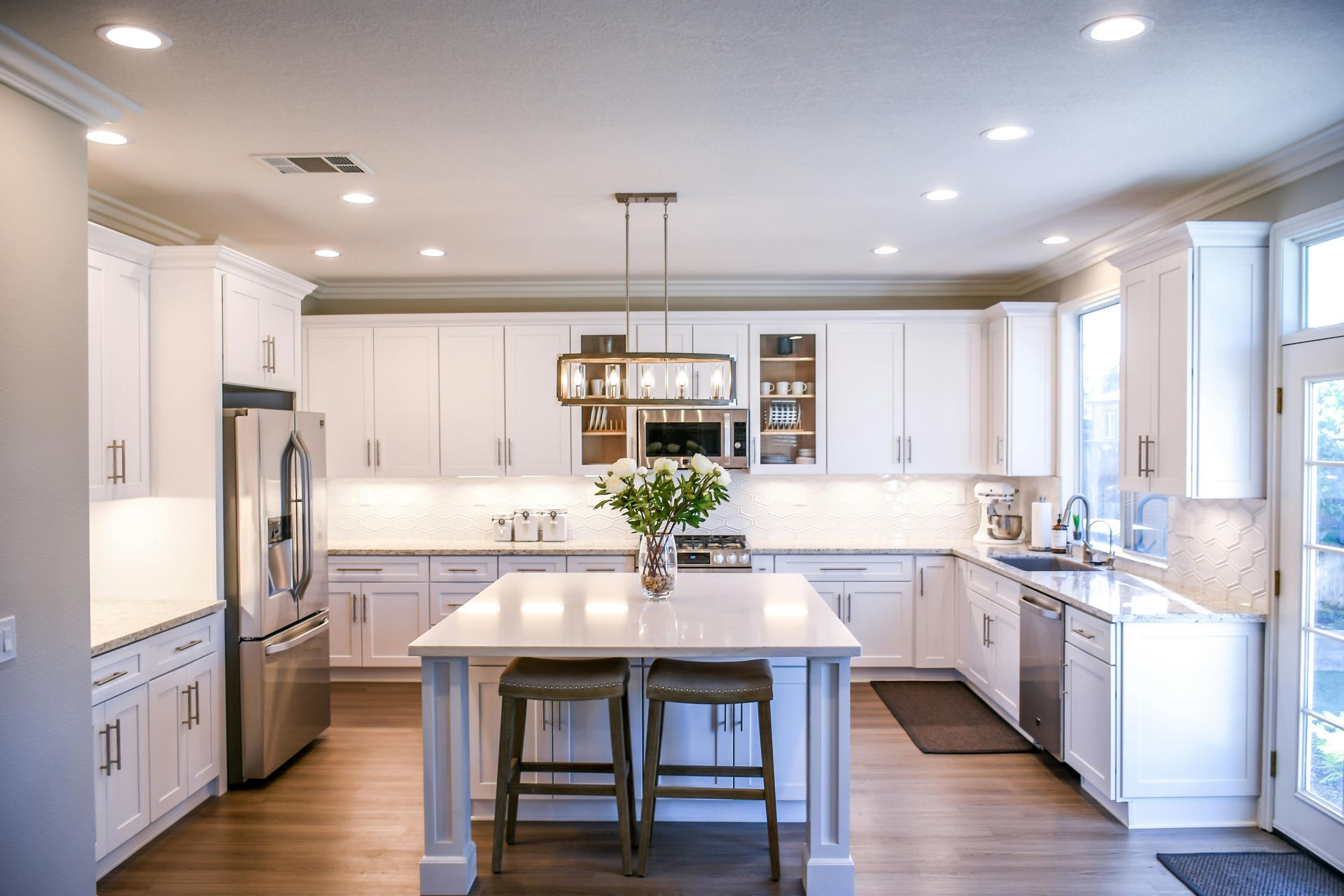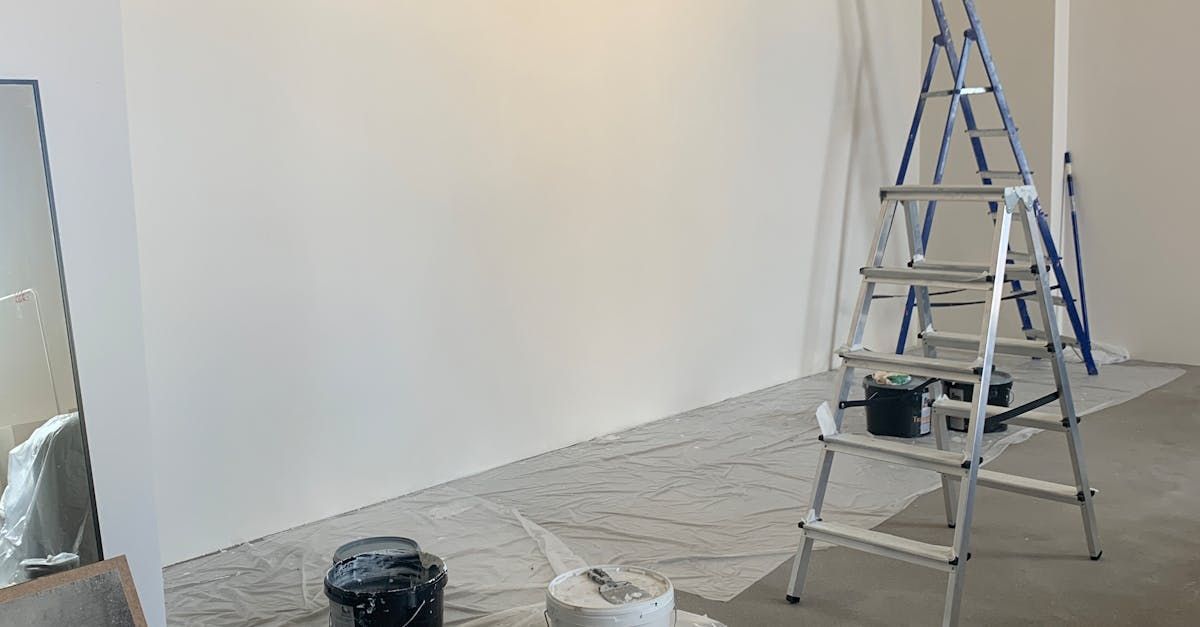
How to Refresh Your Kitchen or Bathroom Cabinets with a Modern Update That Adds Instant Value to Your Home

When painting your kitchen cabinets, selecting the right paint and techniques can make all the difference. Many brands, such as Benjamin Moore and Behr, offer specialized paints for doors, cabinetry, and trim that are easy to apply and self-leveling, giving your cabinets a smooth finish. Whether you use enamel-based or latex paint, high-quality options will provide the durability needed to withstand everyday wear and tear, along with routine kitchen cleaning. For the best results, opt for gloss or semi-gloss finishes, as these resist scratches and make cleaning easier.
Before You Begin
Before starting, it's essential to test paint samples to see how the color looks throughout the day and with your kitchen's lighting. This step ensures that the paint interacts well with other elements in the space, such as countertops, hardware, and appliances, to achieve the desired look.
Steps for Painting Kitchen Cabinets
1. Choose the Right Paint Color: Picking a color you love is key, especially given the effort involved in painting cabinets. Greens are increasingly popular, from earthy shades to jewel tones. White is a classic option that pairs with almost anything, though it can show stains more easily. For a sleek, modern look, black is a bold choice. Take cues from existing elements in your kitchen, like hardware, countertops, and backsplash, to create a cohesive color palette. Remember, you can always repaint later if you want a new look.
2. Plan for Space: This project requires a dedicated space where you can lay out cabinet doors to dry between coats. If you don’t have room inside, consider using sawhorses outdoors, but be mindful of weather conditions. For indoor painting, a garage or covered patio works well, and using plastic tripods can prevent the doors from sticking to the surface. Good ventilation is essential, so make sure to open windows and use fans.
3. Prepare the Surfaces by SandinG: Sanding is a crucial step in ensuring your paint adheres properly and leaves a smooth finish. Experts recommend sanding your cabinet doors twice—once to remove any old paint or imperfections, and again to smooth the surface for the new coat. A rough surface will help the primer and paint stick, ensuring a long-lasting finish. Sanding will also remove previous sheens, helping to create a smooth base for your paint.
4. Apply a Coat of Primer: After sanding, apply a primer to help the paint adhere better and to ensure an even finish. Zinsser or Behr kitchen and trim primers are great options for most surfaces. Make sure the cabinets are clean before priming, and sand lightly after the primer dries to remove any imperfections before painting.
5. Choose the Right Tools for Painting: For larger flat areas, use a roller to apply the paint smoothly and quickly. However, rollers can sometimes leave a slight texture, so opt for a high-quality roller to minimize this. For detailed areas, edges, and corners, use a brush. A combination of both a brush and roller ensures even coverage and attention to detail. This method will give your cabinets a professional, polished look.
6. Painting Kitchen Cabinets: Once your prep work is complete, it’s time to paint. Wipe down the cabinets with a damp cloth to remove any dust. Start by applying the paint with a roller on the flat surfaces and use a brush for the detailed areas. For high-traffic kitchens, use a durable cabinet paint that’s washable and resistant to grease and dirt. While some paints don’t require a topcoat, adding a second coat of paint or using a clear protective layer can enhance durability. Let the paint dry according to the manufacturer’s instructions, which may take several hours.
7. Reinstall Doors, Drawer Fronts, and Hardware: After the paint has fully dried, reattach your cabinet doors and drawer fronts, making sure to reinstall the hardware in the correct locations. Labeling your doors during removal will make reinstallation easier. Once everything is in place, you’ll see how a fresh coat of paint can transform your kitchen.
Tips for Success
Test Paint Samples: Always test the paint in different lighting throughout the day to ensure you like the color.
Use Proper Ventilation: Ensure good airflow by using fans and opening windows while painting.
Invest in Quality Supplies: High-quality brushes and rollers will give you better results and last longer for future projects.
Conclusion
Painting your kitchen cabinets is a rewarding project that can drastically change the look of your kitchen. By carefully selecting your paint color, properly prepping the surfaces, and using the right tools, you’ll achieve a durable, professional-quality finish. Whether you choose a bold black, a timeless white, or a trendy green, your freshly painted cabinets will give your kitchen a whole new life. IF YOU BELIEVE STAINING IS THE RIGHT WAY TO GO WITH YOUR PROJECT, CHECK OUT OUR CABINET STAINING GUIDE TO RECEIVE A DETAILED WALK-THROUGH.

Considering a pro? Receive a free quote today and revamp your interior!
Location
Serving the Lansing Area, including East Lansing, Okemos, Dewitt, Holt, Grand Ledge, Bath, and other surrounding areas.
All Rights Reserved | S&B Painting Services LLC